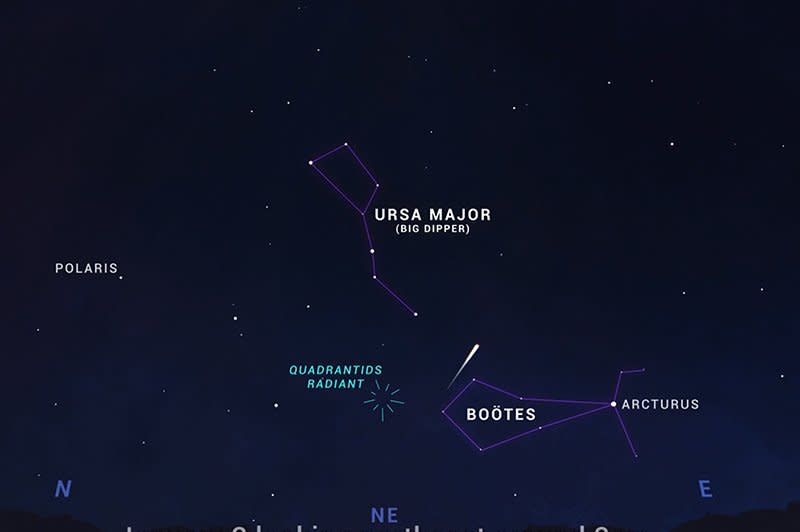'Explosive' Quadrantids meteor shower heading into peak

Jan. 3 (UPI) -- The annual Quadrantids meteor shower is expected to peak early Thursday, dazzling viewers where cloud cover allows across the United States.
The Quadrantids is one of the best and most active meteor showers with up to 120 meteors every hour, NASA says. The meteors travel at a velocity of 25.5 miles per second and are most active from Dec. 26 through Jan. 18.
The peak this year is expected from about 4 a.m. to 10 a.m. EST Thursday.
NASA says the meteors are the product of the defunct Quadrans Muralis constellation and are most visible in the Northern Hemisphere. The meteor shower is noted for its "bright fireball meteors" that produce "explosions of light and color" lasting longer than most meteor streaks.
NASA recommends viewing the meteor shower from a location far away from city lights that make it difficult to see the nighttime sky. It is important to dress appropriately for winter weather and helps to use a sleeping bag to lie on the ground with feet facing the northeast while looking up at the sky.
It takes about a half-hour for human eyes to adjust to the darkness, and the meteor shower should be visible until dawn, NASA says.
Most meteors originate from comets, but the Quadrantids originate from asteroid 2003 EH1, which takes 5.52 years to orbit the sun, according to NASA. The asteroid is relatively small at 2 miles in diameter, and astronomer Peter Jenniskens is credited with discovering it is the source of the Quadrantids meteor shower.
The Quadrantids first were identified in 1825 and are visible throughout the nighttime sky when there is no cloud cover.

